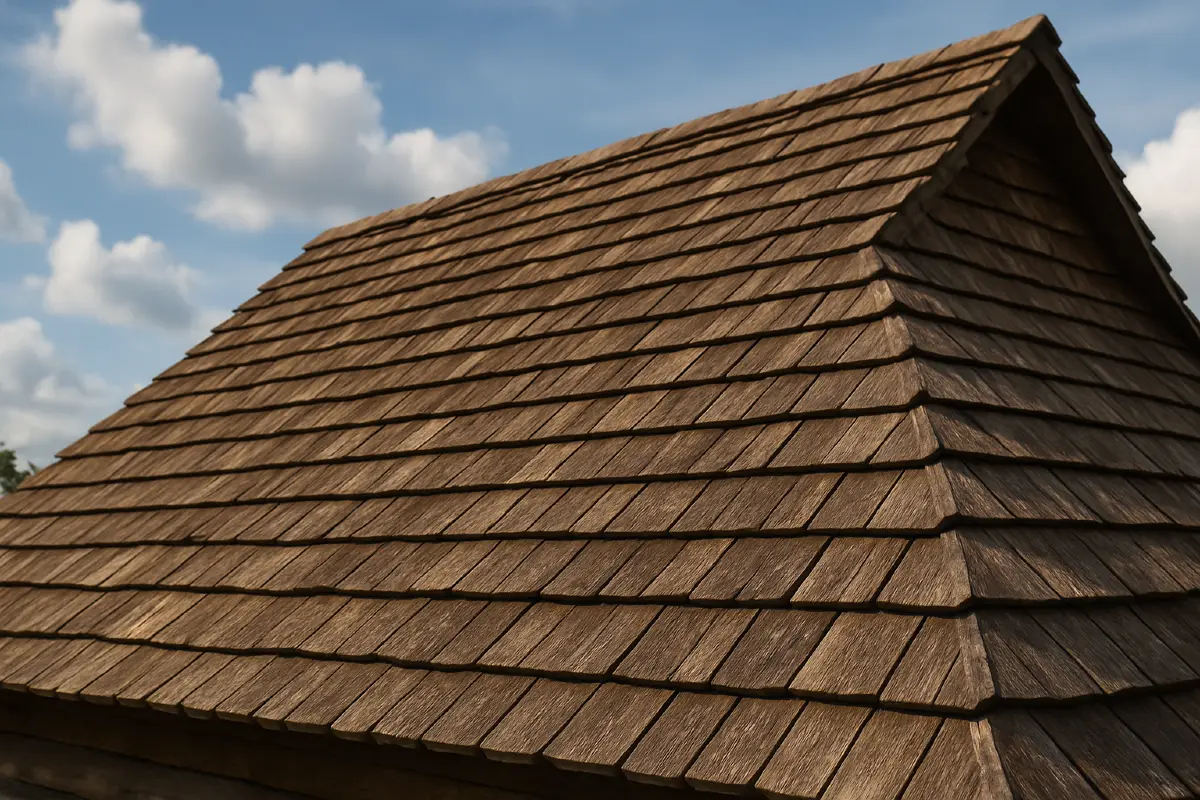Wood roofing offers a unique charm and provides excellent insulation, but choosing the right type of wood is critical for durability and aesthetics. Different wood species offer various benefits and drawbacks, impacting your roof’s resilience, maintenance needs, and cost.
This guide explores crucial factors to think about when selecting wood for your roofing project to help you make informed decisions.
Understanding Your Wood Options
Various wood types are available for roofing, each with distinct characteristics. Cedar, redwood, and pine are among the most popular choices for wood roofing. Cedar is well-known for its natural resistance to decay and insects, making it a popular option for outdoor uses. It provides an attractive look and can last for several decades with proper care.
Redwoods, recognized for their beauty and stability, are resistant to rot and insects, giving them longevity and appeal. Pine wood, while less durable than cedar and redwood, is often more affordable and can be treated to improve its weather resistance. When choosing the right type of wood, take into account factors like climate, intended style, and budget.
Understanding the basic properties of these wood options will guide you toward making the most suitable choice. Sustainable Wood Solutions for Every Need should be sourced from reputable suppliers to ensure quality and environmental responsibility. Some homeowners explore composite or engineered wood options, which mimic natural wood aesthetics while offering increased durability and lower maintenance.
These alternatives can be a smart choice in areas prone to moisture or severe weather. It’s important to think about the weight of the wood material, as heavier options may require additional structural support.
Evaluating Durability and Maintenance Requirements
Durability is a significant factor when selecting wood for roofing. Different wood types require varying levels of maintenance. Generally, hardwoods like oak and hickory are very durable but may be more costly in terms of both the initial investment and upkeep.
Softwoods, like cedar and pine, can be less expensive and easier to work with, but may demand more regular maintenance to maintain their quality. When determining how much maintenance you are willing to perform, assess your practical limitations and the local weather conditions.
Areas with high humidity or rainfall may warrant wood that is naturally resistant to rot. If you live in a dry climate with fewer environmental concerns, you may opt for softer woods that require less maintenance. Selecting a wood type based on its durability and maintenance needs can aid in long-term satisfaction with your roofing investment. Regular inspections and upkeep can significantly extend the lifespan of your wooden roof, minimizing repair costs.
Understanding Climate Efficiency
The climate of your region significantly influences the choice of wood for your roof. Certain wood species perform better in specific climates, impacting their longevity and performance. Cedar performs exceptionally well in humid environments owing to its natural resistance to moisture and decay.
Meanwhile, redwood excels in coastal settings but can be more resistant to the sun’s UV rays, reducing fading and wear. It’s important to factor in insulation properties. Wood naturally provides good insulation, helping to regulate indoor temperatures. Well-chosen wood can decrease energy costs and improve comfort throughout the year. Pairing the right wood with proper installation techniques will further enhance its energy efficiency.
Examining Aesthetic Qualities
Aesthetic appeal plays a critical role in choosing the right wood for your roof. Each wood species offers unique grains, colors, and aging effects. Your style and the architectural design of your home should influence your wood selection.
Cedar’s warm, rich hues develop a beautiful silver finish, complementing traditional and contemporary architectural styles. Redwoods, with their reddish undertones, present a dramatic effect and often help maintain a clean appearance with minimal treatment.
Pine can be easily stained or painted, providing flexibility and personalization for homeowners who want specific color schemes. Besides color and grain, think about how the wood will weather. Some woods darken naturally, while others may fade. Establishing a clear vision of your desired aesthetic will guide a more satisfying choice.
Budget Considerations: Affordability vs. Long-term Value
Budget significantly impacts roofing material selection. While some woods may cost less upfront, their maintenance demands and longevity should factor into the investment. It’s important to examine your budget regarding long-term costs rather than focusing solely on the initial purchase price.
Cedar and redwood frequently come at a higher upfront price, but their durability may save money in the long run by minimizing replacements and repairs. Pine is often more budget-friendly but may require more frequent replacements, depending on treatment and maintenance. Accounting for these various factors ensures that you make a well-rounded decision that aligns with your financial situation and roofing expectations.
Consulting with Professionals
Choosing the right type of wood for your roof can often require expertise. Consulting with professionals, roofing contractors, architects, or local forestry experts can provide invaluable insights based on experience and knowledge. They can guide you through the nuances of wood properties, local climate effects, and maintenance requirements.
Working with an expert can help navigate the wide array of options available, ensuring that your unique needs and concerns are addressed. Engaging professionals helps to avoid potential pitfalls, ensuring your investment leads to a durable and beautiful wooden roof.
Whether you are embarking on new construction or a roofing renovation, understanding the right type of wood for your roofing will significantly impact the functionality, aesthetics, and longevity of your roof. Taking the time to research and weigh the various options based on your unique needs ensures long-term satisfaction with your decision.
